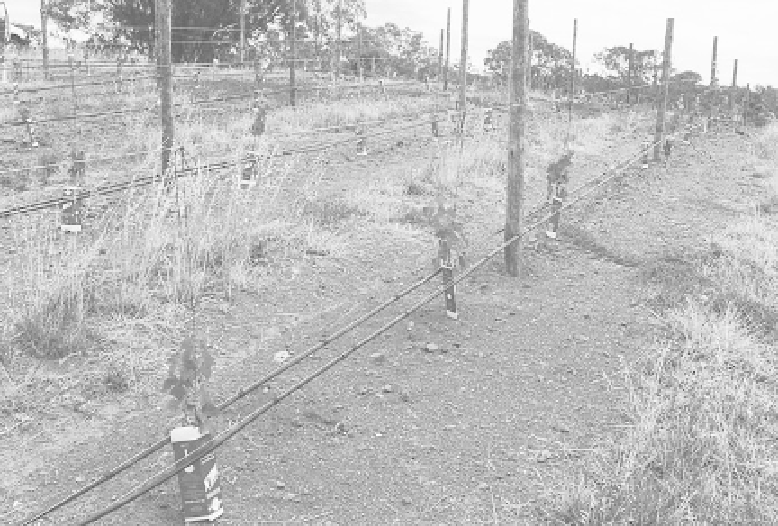Agriculture Reference
In-Depth Information
1999). An example of these calculations, using crop coefficients from table 6.4
and target
RDI
values, is given in appendix 11.
Partial Root Zone Drying
Partial root zone drying
(
PRD
) is a recently developed technique that shows promise
for regulating vine growth and saving irrigation water, without sacrificing grape
yield and quality (Dry and Loveys 1998). The physiological basis of
PRD
is that
a hormonal signal is sent from vine roots to the shoot when the roots experience
a shortage of water. The short-term signal appears to be an increase in abscisic
acid concentration, which induces partial stomatal closure in the leaves and a re-
duction in transpiration. A longer-term response may be a decreased production
of cytokinins, which slows shoot growth. However, the plants adjust to the drier
soil conditions and the regulating effect disappears with time unless the dry soil
zone is alternated. This is achieved by having a dripper on each side of a vine,
and alternating the side of the vine that is irrigated every 10-15 days (fig. 6.8).
Experiments in commercial vineyards in southeastern Australia have shown
that with reduced lateral shoot growth, leaf area was decreased and bunch expo-
sure improved. In some cases, there were small increases in sugar content and
titratable acidity of the fruit. Yields may be slightly decreased, but the quantity of
water used during a season is as much as 50% less than that used in normal irri-
gation practices.
PRD
requires two dripper lines per row and sensors installed to
monitor the changes in
6.5.4
on either side of the vine. The savings in water are not
necessarily greater than with properly managed
RDI
, as can be seen in appendix
10. Further assessment of the advantages and disadvantages of the two approaches
for grape production, berry quality, and water saving is in progress for a range of
soils and climates.
A young vineyard with drip irrigation lines for PRD. Photograph by the author.
Figure 6.8

